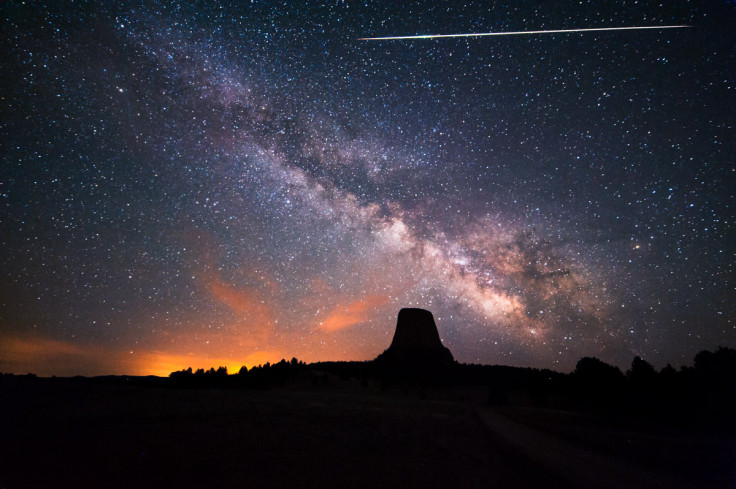Eta Aquarids 2016: Where to watch meteor shower from Halley's Comet

The Eta Aquarid meteor shower is set to peak over 4 and 5 May, with up to 60 shooting stars visible from the Southern Hemisphere. The Eta Aquarids originate from Halley's Comet, when Earth passes through the stream of ice and dust debris being shed by the comet.
Dust from the comet hits Earth's upper atmosphere of around 148,000 mph. These tiny grains burn up to produce the glowing trails streaking across the sky.
The Eta Aquarids normally produces between 30 and 60 meteors per hour in the Southern Hemisphere. Stargazers in the Northern Hemisphere can expect to see far fewer – generally between 10 and 20 per hour. This is because of the location of the radiant of the Eta Aquarids (Aquarius), which lies south of the equator.
Nevertheless, viewers in the UK have a good chance of seeing some meteors this year. Clear skies are expected overnight on 5 May for a large part of the country, and the waning crescent moon means the shower will not be obscured by too much light. The best time to view the meteor show is just before dawn.
People wishing to watch the meteors are advised to find an area away from city and street lights. "Come prepared with a sleeping bag, blanket or lawn chair. Lie flat on your back with your feet facing east and look up, taking in as much of the sky as possible," Nasa advises. "After about 30 minutes in the dark, your eyes will adapt and you will begin to see meteors. Be patient – the show will last until dawn, so you have plenty of time to catch a glimpse."
It is also possible to watch the meteor shower live online via Slooh. The website will be hosting a live event beginning 5 May 8pm EDT (6 May 1am BST).
"In 2016, the forecast calls for the greatest number of Eta Aquarid meteors to light up the predawn darkness on May 5 and 6," a statement on the website said. "It should be a good year for this shower, with the May 6 new moon guaranteeing deliciously dark skies for the 2016 Eta Aquarids."
© Copyright IBTimes 2025. All rights reserved.






















